
|
010105:
Motions of coronal-hole boundaries I. Supergranulation
In this nugget, we expected to find that the boundaries of the coronal
hole would flutter like a Kansas curtain in a thunderstorm, as a
consequence of the solar surface motions we call supergranulation.
On first look, that may not be the case.
|

|
010112:
"Starburst" Images and Scattering Research
This week the SXT scientists are gathered for
a small workshop dedicated to the subject of this
nugget, which is another of our series on how the SXT instrument
works. We have to understand all the nitty-gritty details of the
instrument before we can be confident about what is real, and what is not,
in our data.
|

|
010119:
A Flare in an Almost-Anemone
When a solar active region emerges in a coronal hole,
the new active region may not appear to have any
coronal connections to other regions.
We call this an "anemone" region, after the
windflower. It's noteworthy that the tiny little flare that
occurred in this region is more than twice the diameter of Earth!
|

|
010126:
A coronal conveyor belt?
Normally we write these Yohkoh science nuggets based on
interesting phenomena that we spot for the first time in the SXT data. Sometimes we miss something, and
in this case, it's what the authors of a published paper describe as
the conveyance of energy from one solar active region to another.
|

|
010202:
A dark 'S' erupted!
Bright 'S' shapes (sigmoids) are popular among solar physicists,
especially those who study flares and CMEs.
However, the 'S' here is invisible to SXT.
A gorgeous dark 'S' shape appeared in SoHO/EIT images
and produced a spectacular Coronal Mass Ejection.
|

|
010209:
A most peculiar high-energy event
Normally we write these Yohkoh science nuggets mostly about
coronal soft X-ray sources.
In this Nugget we talk about events that emit hard X-rays, gamma-rays, and
copious "solar cosmic rays" -- which make the topics that are our bread
and butter seem rather flacid.
|

|
010216:
A two-sided jet 1,000,000 km long
Soft X-ray "jets" were one of the truly new discoveries of
Yohkoh/SXT, apparently one that was not anticipated by the
NASA Skylab mission 30 years ago.
Here we report a huge bi-directional jet that spread out across
the solar surface, with a beautiful structure.
|

|
010223:
Two-stage dimming
Coronal dimming, seen in soft X-rays, should rightly be regarded as one
of Yohkoh's major discoveries.
This is one of those cases where a coronal disturbance
does not focus entirely down to a compact origin (eg a major impulsive
flare); instead, there are distinctly global effects.
|

|
010302:
Temperature of active region loops
In order to understand how the solar corona is heated, the distribution
of temperature along a typical X-ray loop is essential information.
To get this, you take the ratio of
two images in different filters (with slightly different temperature
sensitivities), and the ratio directly gives you a temperature.
|

|
010309:
A CME and an impulsive flare
This week we have had four M-class flares after several weeks of
their absence. One of them was very well observed by SXT, and showed
many of the fascinating optical, X-ray and radio
phenomena that are associated with flares and Coronal Mass Ejections.
|

|
010316:
Twin-dimming event of 28 February 2001
Coronal dimming in X-rays and EUV is often discussed in the context of
Coronal Mass Ejections (CMEs). Are these dimmings the footpoints of a
large magnetic flux rope, which in turn are the central part of the CME?
|

|
010323:
"Magnificent cusp", now analyzed
We report a success story here: an item we reported in a nugget entitled
"A magnificent cusp" two years ago has now been analyzed and
published. Now what do we need? More theory!
|

|
010330:
What an aurora!
Spectacular auroras were seen around the world on March 31, 2001. What
happened on the Sun that caused all this hullabaloo?
A great big sunspot, a major X-ray flare, and an Earth-directed CME!
|

|
010406:
The most powerful solar flare in decades!
We missed the fun part of this event, as often happens, so we need
another one, preferably one jointly observed with
HESSI).
Huge events show us more of the things we like to study.
|
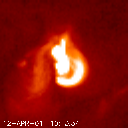
|
010413:
A beautifully observed major flare
Yohkoh was flying through clear sunshine at the time of
the flare, leading to great observations.
It's becoming clearer and clearer that geometrical re-formation
of the coronal magnetic field plays a decisive role in all kinds of
phenomena.
|
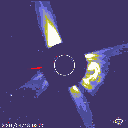
|
010420:
Energetic particles from the far side of the Sun
This event is interesting because it shows that a far-side event
can have effects at 1 AU due to a shock wave that has a wide
longitudinal
ecent. It also gives us a chance to think more seriously about the 3-D
nature of Coronal Mass Ejections.
|
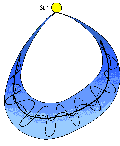
|
010427:
A transient coronal hole
Today let's take a break and pick up a little-discussed subject:
the nature of "transient coronal holes."
The inference here is that magnetic reconnection may not be such
an energetic process, and may be dictated more by global coronal
conditions than by local physics.
|
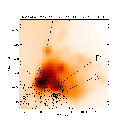
|
010504:
Hard x-ray ejection: a work in progress
This week many other nice things happened on the Sun,
but the April 18 event has
obsessively preoccupied attention. Why is this?
We show some of the work in progress and comment here on why we have
dropped everything to pursue it.
|

|
010511:
Sigmoid alert and eruptive flares
When is an eruption not an eruption? When you call a sigmoid alert!
Last week we executed our carefully-laid
plans for an observing campaign, based
upon the recognition of a new "sigmoid" coronal structure in our
images.
|
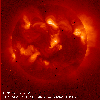
|
010518:
Cleverly-Designed Image Buffers
This week let's turn the spotlight backstage and look the
instrumentation of the Yohkoh Soft X-ray Telescope, SXT.
In this nugget we discuss how the SXT takes various kinds of images
of the Sun and sends them to us on the ground.
|
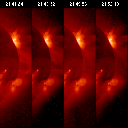
|
010525:
Two kinds of CMEs
There tend to be two kinds of CMEs -- fast ones, associated with solar flares,
and slow ones, associated with the eruption of filaments.
"Halo" CMEs -- directed toward or away from Earth --
are of unique importance. How do fast and slow CMEs show up in such events?
|

|
010601:
Hard-soft-hard
As we get closer to the launch of
HESSI (it almost happened this week!),
naturally our thoughts turn to the high-energy aspects
of solar flares.
Solar "hard" X-rays and gamma rays give us quite direct views of
these phenomena, compared to the "soft" X-ray emission
that the Yohkoh Soft X-Ray Telescope (SXT) images.
|

|
010608:
Predicting the Coronal Structure During the Upcoming Total Solar
Eclipse
The first total solar eclipse of this millennium
will be seen on 21st June, 2001, along a path crossing
southern Africa through Madagascar.
For scientists planning observations, it is helpful to know
the global structure of the corona in advance -- but how?.
|
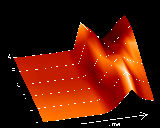
|
010615:
All Loops, All the Time
When we talk about "coronal loops" in Yohkoh SXT
observations, we mean long, slender structures that are seen in the
corona. These loops act like hoses, channeling squirts of
solar gas driven by heating or cooling.
|

|
010622:
How smooth is the Sun?
Comparatively speaking, the Sun's surface (photosphere) is really smooth.
The thickness of the solar atmosphere is about 0.02% of the solar radius.
This corresponds to a 2-mil tolerance on a ten-inch part, in machinist's
parlance, not a bad job.
|
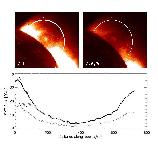
|
010629:
Where are Coronal Loops Heated?
Coronal heating is one of the Big Questions of solar physics. Simply
put,
this is because understanding how the energy gets transported to the
upper
atmosphere and deposited there is crucial to figuring out such
fundamental
things as how the solar wind is accelerated, and why coronal loops are
hot.
|

|
010706:
Breaking Records -- It's all about Latitude!
This week the Sun is showing us a pair of active regions that is
unusually far from the equator.
Finding the
limits of size and latitudinal extent of active regions and CMEs helps
us to put constraints on theories of the Sun's magnetic fields.
|
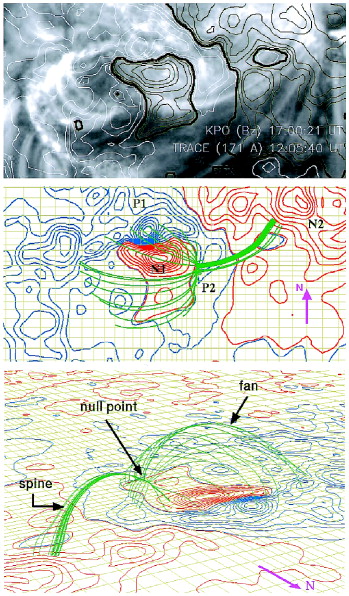
|
010713:
Bastille Day throughout history
This nugget is nothing more than a
transparent ruse by which we get to show you more pretty pictures of
solar
events that took place on July 14, 2000 (the French Bastille Day).
The author's tongue is squarely in his cheek!
|

|
010720:
Three-part harmony
All you tenors, altos, basses, sopranos, baritones and so forth:
this science nugget has nothing to do with music theory.
Instead we point out some nice three-part features of coronal mass ejections
(CMEs),
which are among the most spectacular and beautiful of solar
phenomena.
|
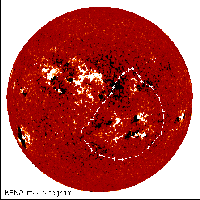
|
010727:
A solar "Island Universe"
The romantic-sounding title of this nugget echoes astronomers' celebrated
Shapley-Curtis debates regarding the nature of nebulae.
The somewhat farfetched analogy here is suggested by
an "island universe" of magnetism on the Sun, seen via
the Yohkoh Soft X-Ray Telescope.
|
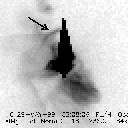
|
010803:
Magnetic collapse and a flare
A solar flare consists of an extravagant collection
of energetic phenomena - radiation, particle acceleration, expansion,
coronal mass ejection, etc.
This lavish display needs a source of energy, and this week
two SXT scientists think they've found an example that shows
that it's extracted from the Sun's magnetic field.
|
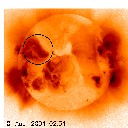
|
010810:
A gentle giant
During a recent period, the sun showed dramatic variability in
its coronal structure, but very little variability in
its overall X-ray brightness.
The huge region that accounted for much of the restructuring is the gentle
giant named in the title of this nugget.
|
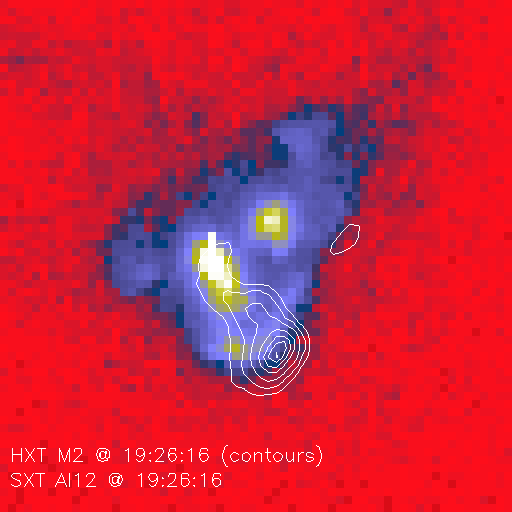
|
010817:
Yohkoh observations of X-class flares
Whenever a big (X-class) flare occurs, we are pleased.
Such big flares
are likely to be observed by many instruments covering a wide wavelength
range, and thorough analysis of these data has the potential to
give us an important insight into the mechanism(s) that account for
these spectacular events.
|

|
010824:
Reverberations of April 7, 1997
Sometimes the initial look at a given phenomenon doesn't reveal all of
its subtleties.
It is nice to see the information accumulating, and this
nugget reviews several pieces of work on one of the first really nice
flare/CME events of the current solar maximum: April 7, 1997.
|
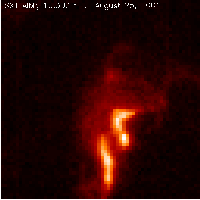
|
010831:
Millimeter waves, white light, and gamma rays
The X-class flare of August 25, 2001 had a huge radio flux at short
wavelengths.
Here is a chance for us to write a nugget showing how all parts of the
solar spectrum do things simultaneously in such an event.
|
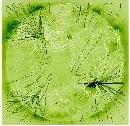
|
010907:
Three X-ray global waves
Large-scale (global) coronal waves
are launched by yet-mysterious processes in the heart of a solar flare.
We now believe that these are probably akin to bow waves driven ahead of CMEs
rather than free-running "blast waves" of the sort seen in the corona.
|
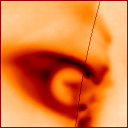
|
010914:
Cusps Within Cusps
We love cusps. There
have been several Nuggets dedicated to them (see here )
and several tens mentioning them. We have had Magnificent
cusps and Cusps
upon Cusps . The Sun continues to surprise us by its ingenuity,
and in this Nugget we discuss cusps within cusps, prompted by a very
nice example seen this week.
|

|
010921:
One Week in the Life of a Sigmoid
This week we go back to
a set of observations which were made in August of 1999, as part of `Whole
Sun Month 3', where, jointly with many other instruments, SXT
followed an active region for a week as it crossed the solar disk.
Our observations allowed us to see how the region behaved
over many days.
|

|
010928:
Czech hard X-rays fit beautifully!
This is our first opportunity to intercompare Yohkoh data with hard X-ray
photometry from the new Czech-built
Hard X-ray Spectrometer (HXRS for
short).
We're pleased to report that the HXRS and Yohkoh data fit well together and can
be analyzed.
|
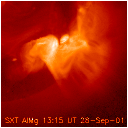
|
011005:
Spiny arcades repeat
Yohkoh has seen multiple spiny arcades this week.
A pointy coronal streamer is a often called a "helmet streamer", but
following this analogy a spiny arcade would be more like a whole platoon
of Prussian soldiers wearing helmets with spikes.
|
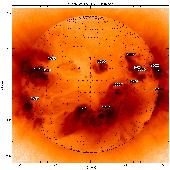
|
011012:
Life story of a super region complex
A high level of flare activity
was observed from mid-August through late-September.
The spectacular movies in this nugget show,
over three solar rotations, the growth and decay
of the active region complex
which was responsible for the fireworks.
|

|
011019:
Hard X-ray and UV emissions in flares
Comparisons between TRACE and Yohkoh/HESSI provide
useful information about the transport of high-energy electrons in
solar flares and the physical conditions of the transition region and chromosphere.
This nugget shows why we hope the
HESSI satellite for flare studies will be launched without further delay.
|

|
011026:
A swirling X-class flare
This Yohkoh science nugget marks the beginning of the fifth year
of weekly nugget-writing.
This nugget describes a spectacular large flare whose swirling motion
may be another hint of
helicity
in a flare/CME source.
|

|
011102:
A veteran complex of activity, still alive and kicking!
Volcanic eruptions on Earth occur at certain "hot spots" like those
underneath the Hawaiian islands. Active regions tend to show the same
behavior, popping up repeatedly at sites of
earlier activity -- demonstrating an effect we talked about in
an earlier nugget, as well!
|

|
011109:
Sigmoid success: a CME predicted
More evidence here that the sigmoid signature is a real one.
Now we need to figure out how to convert this sigmoid signature into a
more disciplined tool for forecasting and prediction, and to learn more
about the physics of the process we're watching unfold.
|

|
011116:
A skinny but robust coronal hole
A coronal hole is a dark region of the corona from which coronal
magnetic field lines open out into interplanetary space.
But why should there be any open field lines coming out of the
solar corona?
This is the starting point for one of the mysteries of the solar
magnetic field.
|
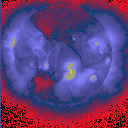
|
011123:
Another Sigmoid, with Partial Success
Active region NOAA 9704 displayed a nearly perfect S-shape on 20
November. Because such sigmoids seem
to be more likely to erupt than non-sigmoids, the SXT team has
standing orders to be alert for opportunities to observe them.
|
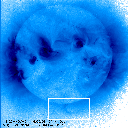
|
011130:
High-latitude Eruption with Coronal Signatures
This week's solar activity included a filament eruption that occurred
at an unusually high latitude.
An earlier eruption from the same vicinity event might have been seen when the
region was on the backside of the Sun -- as hinted by the single
image at the left.
|

|
011207:
Unusual Motions in a Solar Flare
It's not as simple as "what goes up must come down" when you are talking
about motions seen in solar flares.
In this nugget the SXT Chief Observer talks about unusual downward
motions in a recent observation.
|
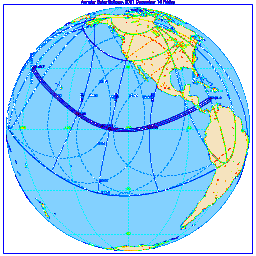
|
011214:
Annular eclipse, December 14, 2001
We are sad to report that the Yohkoh attitude control
system could not handle this eclipse, which
threw the spacecraft into a "safehold" state, in
which it remains. Recovery from this will be difficult, but perhaps not
impossible. Stay tuned!
|
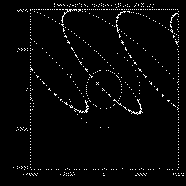
|
011221:
Yohkoh's Troubles
This science nugget explains further what we know about the present
condition of Yohkoh.
In a nutshell, it is a situation very similar to that experienced by
SOHO in 1998, from which a nice
recovery could be made.
|
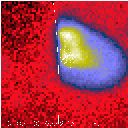
|
011228:
Rapid variability in a superhot source
By "superhot source" we mean a coronal soft X-ray source with an
apparent temperature exceeding 30 MK or so. Lower temperatures commonly
occur in flare plasmas, but sometimes we see higher temperatures, as in
this event.
Right now there is no concensus about what this may mean.
|



































































































